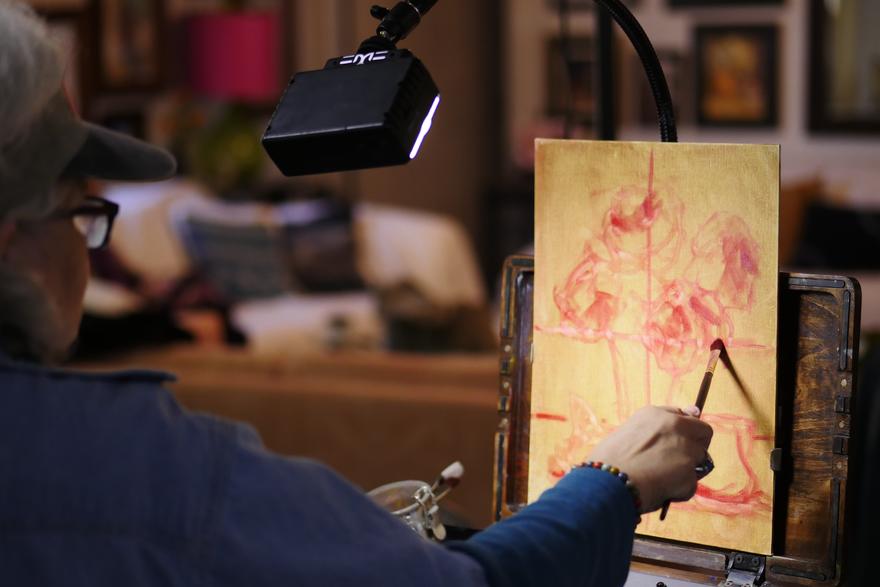How is Painting a Form of Meditation?

Have you ever found yourself deep in the process of painting and realized you’ve lost all track of time?
Or that you’re really hungry but forgot all about eating?
How about realizing that you’ve completely neglected to water your plants?
Or even stopped to drink water?
Or worse yet, that you now realize you have to pee like crazy?
Of course you have! It’s common for people to report that they’ve become completely immersed in their painting and “lost touch with reality.”
How about meditation?
Have you been deep in meditation and realized that you’re unaware of your body, how it sits in space, what’s going on around you? That you have no conception of how much time has passed? It’s also common for meditators to report just these types of experiences.
It seems that both of these activities are processes by which we step outside of our everyday world and enter some sort of a parallel universe where time and space don’t operate in the same way that we’re used to.
This begs the question: Is painting a form of meditation?
You bet it is!
When you enter the secret world of painting, you literally and figuratively step onto an island far away from your everyday world, the world of work, and traffic, and laundry, and news, and all those activities that have the potential to produce stress and anxiety.
But let me ask you this: Do you feel good when you paint?
Does painting transport you to a place of joy and tranquility? Or does it also cause you to feel stressed because you just haven’t managed to come up with a way to make it fun?
This is exactly why I recommend meditation to all of my students. Because entering the painting process with the kind of quieted mind that we experience in meditation is the single most important key to have the kind of satisfying and pleasurable experience you expect from painting.
Learning to meditate teaches us exactly what it feels like to step outside of ourselves for a time. And stepping outside of ourselves is exactly what we need to do to accomplish a masterful painting.
Sure, we need some skills. We need to know how to handle a brush, to mix the paint, to compose the painting, to draw with some degree of acuity. But mostly what we need is the ability to see and listen. We need to see our subject for what it really is, and we need to hear what our subject is telling us about how to paint it!
This may be a radical approach to teaching painting, but it’s what I’ve been doing successfully in my own work for decades, and what I’ve been teaching students from around the world for years now. It’s the heart of the The Perrin Method™ and it’s woven into all of my courses, workshops, and demonstrations.
Stay tuned for an exciting release shortly during this month many call March Madness but I like to call Meditation Month.
Cheers,
Dennis
P.S. You can experience meditation as a technique in my new course package, The Flower Series.
Learn more about The Flower Series Here!

1 comment
Finally you have the canvas light up so we can see the colors of paint you are using. Before , in the other videos it was so frustrating to see almost no color on the canvas. I just gave up trying to understand what was happening.
Leave a comment
Please log in or register to post a comment